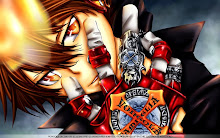1. light: light source, there are many, different types, such as the par 38, halogen, spot, follow light, focus light, etc..
2. holder: lamp holder.
3. Cable: electrically conductive.
4. Dimmer: tool to adjust the light intensity.
5. play light: light that serves to illuminate the stage as a whole.
6. foot light: light to illuminate the bottom of the stage.
7. wing light: light to illuminate the side of the stage.
8. front light: light to illuminate the stage from the front.
9. back light: lighting to illuminate the back of the stage, usually placed at the back of the stage.
10. silhouette light: light to form silhouette on a backdrop.
11. upper light: light to menerang the center of the stage, usually placed directly above the stage.
12. tools: lighting support equipment, such as circuit breaker (fuse), pliers, scissors, insulators, solder, hammer, tespen, cutter, avometer, switch, stopcontact, jumpers, etc..
13. series of light, which is installed in series or individually. (1 channel 1 lamp)
14. parallel light, which is installed in parallel (1 channel some lights).


















